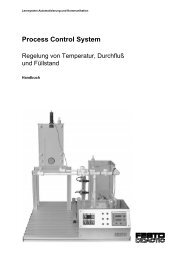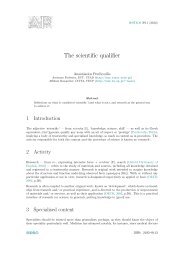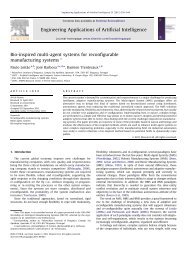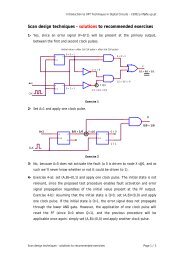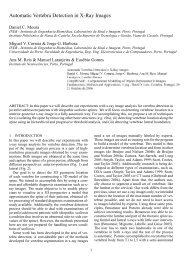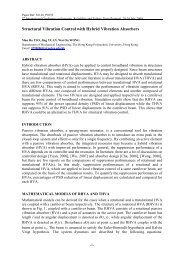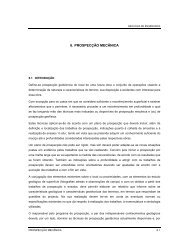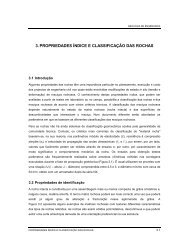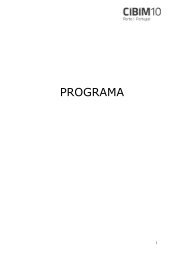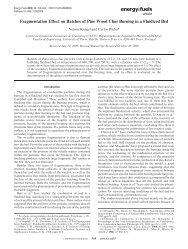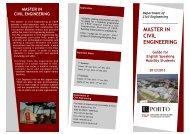Use-Case Controller
Use-Case Controller
Use-Case Controller
Create successful ePaper yourself
Turn your PDF publications into a flip-book with our unique Google optimized e-Paper software.
<strong>Use</strong>-<strong>Case</strong> <strong>Controller</strong> 10<br />
public class PlaceOrder<strong>Use</strong><strong>Case</strong> extends <strong>Use</strong><strong>Case</strong><strong>Controller</strong> {<br />
…<br />
public void start() { displayForm(); }<br />
public void finish() { … }<br />
public void displayForm() { … }<br />
public void setCustomerInfo(String name, String address) { …<br />
}<br />
public void newItem() { … }<br />
public void saveItem(String item) { … }<br />
public void deleteItem() { … }<br />
public void setPaymentInfo(String paymentType) { … }<br />
public void submitOrder() { … }<br />
public void cancelOrder() { … }<br />
}<br />
?<br />
Create the model and view objects needed to implement each use<br />
case. <strong>Use</strong>-case controller classes are responsible to coordinate<br />
the communication between entity objects and interface objects.<br />
After analysing the classes needed to perform the use case's flow<br />
of events, the behaviour must then be distributed to the<br />
interacting objects. All participating classes can be divided at<br />
least in two groups: a model, aggregating all entity objects; and<br />
views, which aggregate interface objects.<br />
Different strategies can be used to allocate the functionality to<br />
entity objects, interface objects and control objects [7][8]. The<br />
strategy to choose must be decided from application to<br />
application. In most cases, the balanced strategy, where control<br />
is placed separately from both interface and entity objects, is the<br />
one that reaches higher locality in changes of the functionality.<br />
* The model for Place Order use case can be simply obtained by<br />
providing a common access-point to the entity objects needed,<br />
as shown in the code below, or including also helper methods<br />
that make more convenient the usage of the model, such as<br />
methods for automating data conversions. Views may be<br />
obtained using a similar approach.<br />
public class PlaceOrderDialog extends javax.swing.JDialog<br />
{<br />
PlaceOrder<strong>Use</strong><strong>Case</strong> use<strong>Case</strong>;<br />
public PlaceOrderDialog(<strong>Use</strong><strong>Case</strong><strong>Controller</strong> use<strong>Case</strong>) {<br />
this(null);<br />
this.use<strong>Case</strong> = use<strong>Case</strong>;<br />
…<br />
submit.setText("Submit order");<br />
submit.addActionListener(new<br />
java.awt.event.ActionListener() {<br />
public<br />
actionPerformed(java.awt.event.ActionEvent event) {<br />
use<strong>Case</strong>.submitOrder();<br />
}<br />
});<br />
}}<br />
public class PlaceOrderModel {<br />
public Order order;<br />
void<br />
Copyright © 2001 Ademar Aguiar, Alexandre Sousa and Alexandre Pinto.<br />
All rights reserved. Permission granted to copy for all purposes of EuroPLoP’2001.



